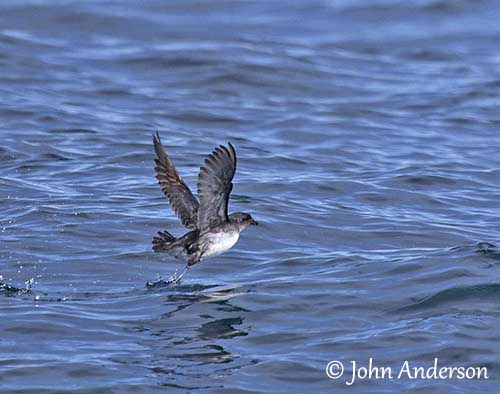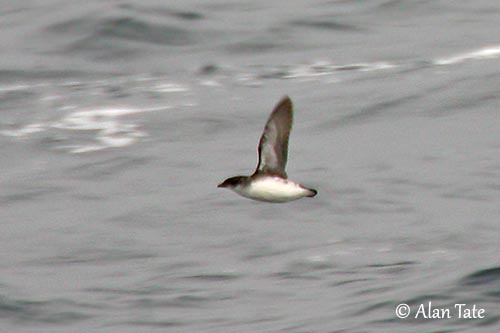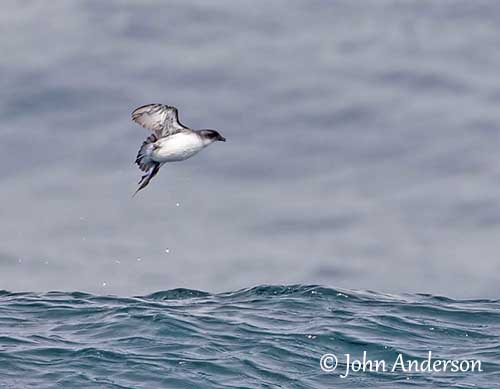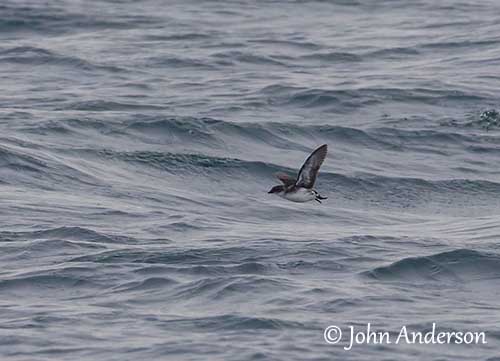
Fr: Puffinure plongeur
Ang: Common Diving-Petrel
All: Subantarktis-Lummensturmvogel
Esp: Potoyunco Común
Ita: Petrello tuffatore comune
Nd: Alkstormvogeltje
Sd: Vanlig dykpetrell
Photographers:
John Anderson
John Anderson Photo Galleries
Alan & Ann Tate
AA Bird Photography
Text by Nicole Bouglouan
Sources:
HANDBOOK OF THE BIRDS OF THE WORLD vol 1 by Josep del Hoyo-Andrew Elliot-Jordi Sargatal - Lynx Edicions - ISBN: 8487334105
A Complete Guide to Antarctic Wildlife by Hadoram Shirihai and Illustrated by Brett Jarrett - Edited by Guy M. Kirwan - ALUL.A Press Oy, Finland - ISBN 9519894705
BirdLife International (BirdLife International)
Australian Antarctic Division: Leading Australia's Antarctic Program
New Zealand birds and birding (Narena Olliver)
Animal Diversity Web (University of Michigan Museum of Zoology)
Tiritiri Matangi Open Sanctuary
Wikipedia, the free encyclopaedia
Common Diving-Petrel
Pelecanoides urinatrix
Procellariiformes Order – Pelecanoididae Family
INTRODUCTION:
The diving-petrel’s taxonomy is still a matter of some debate, and depending on the authors, these birds can be placed in the family Procellariidae or in the family Pelecanoididae (like on this page). There are four species of small, stocky seabirds highly adapted to the aquatic life.
The Common Diving-Petrel has the widest range, but it is threatened by introduced and invasive species on the breeding islands where it nests in burrows.
DESCRIPTION OF THE BIRD:
Biometrics:
Length: 20-25 cm
Wingspan: 33-38 cm
Weight: 86-185 g
The adult is very similar to the Little Auk or Dovekie (Alle alle) of the Northern Hemisphere. But there is any relation between the two families.
The upperparts, including upperwing and uppertail, are grey-black. The short, rounded wings are browner, especially on primaries. In fresh plumage, the rectrices have whitish tips.
The underparts are dusky white with grey underwing, mostly dark grey on axillaries and marginal coverts. The undertail is grey. There are some grey spots on body sides and rear flanks.
On the head, we can see a blackish-grey mask through the eyes and on anterior ear-coverts. Supercilium and neck-sides are dull white. There is a large grey to dark grey patch on breast-sides, sometimes forming a complete collar.
The short, broad-based, hooked bill is blackish-grey, but the lower mandible has paler base and pale horn spot at centre. It is formed by several horny plates. The two external tubular nostrils are open upwards (forwards in other petrels) as an adaptation for diving. The eyes are dark brown. Legs and webbed feet are pale blue with blackish webs and soles.

The Common Diving-Petrel has a gular pouch formed by the extensible skin of the throat. This pouch is used for storing food.
The generic name “Pelecanoides” comes from this morphological feature that was compared to the much larger pouch of the pelicans (Pelecanidae).
Both adults are similar.
The juvenile resembles adults but it has weaker bill.
SUBSPECIES AND RANGE:
The Common Diving-Petrel has six recognized subspecies.
P.u. urinatrix (here described) occurs in SW Pacific Ocean and Tasman Sea. It breeds from SE Australia and Tasmania to N New Zealand, including the Cook Strait.
P.u. chathamensis is found in S New Zealand Islands (Solander, Stewart and Snares), Chatham Islands and neighbouring seas. This race is similar to nominate but smaller.
P.u. coppingeri occurs in SE Pacific Ocean and might breed on coast of Chile. This race is similar to the race “berard” but rather smaller.
P.u. exsul occurs in S Atlantic Ocean, Indian Ocean and S Pacific Ocean. It breeds from South Georgia E to Antipodes Islands. This one has broad bill, darker breast-sides and heavier grey mottling on the throat.
P.u. dacunhae is found in S Atlantic Ocean. It breeds on Tristan da Cunha and Gough Island. This race is smaller than “berard” with dark streaks on cheeks, lower head and neck-sides.
P.u. berard is found in SW Atlantic Ocean and breeds on Falkland Islands. This one has smaller bill than nominate, longer tail and middle toe. It shows heavier mottling on lower head.

HABITAT:
The Common Diving-Petrel frequents both inshore and offshore waters, but it is mainly an inshore feeder and usually occurs in coastal waters close to the breeding sites. It breeds on islands, often on steep slopes with dense tussock grass. The breeding colonies are usually established in coastal areas, but also well inland.
CALLS AND SONGS: SOUNDS BY XENO-CANTO
The Common Diving-Petrel is silent at sea. At colonies, it gives a repeated, double cooing or mewing note “whooee-wihip”. It calls both in flight and inside the burrow. The female gives longer calls. Other sounds include whistles, squeaks and groans.
BEHAVIOUR IN THE WILD:
The Common Diving-Petrel feeds primarily on marine crustaceans such as Antarctic Krill of genus Euphausia, copepods and amphipods shrimps.
It catches the preys by diving from the surface or after plunge from the air. It pursues the preys underwater (up to 60 metres deep). The depth varies according to the range, the season and the type of prey.
The Common Diving-Petrel is an agile diver and swimmer, even in stormy seas. Feet and tail are used as rudders while the wings are used as oars. It literally flies underwater. It feeds alone or in small groups.
The Common Diving-Petrel is gregarious and colonial breeder. Mates are monogamous with long-term pair-bonds. They form large breeding aggregations on land.
This specie is strictly nocturnal on land in order to avoid predation. During the breeding season, they call from inside the burrows and in flight over the colonies. The female performs a pre-laying exodus at sea for feeding. Both parents share all the nesting duties.
The Common Diving-Petrel is probably fairly sedentary. It usually remains in the vicinity of the colonies, but it also disperses northwards (for example: from Falkland Islands to N Argentina). But immature birds are probably more dispersive than adults.

The flight is low over the water, with fast whirring wingbeats. The diving-petrels are able to fly through high waves. While flying typically low over the surface, if they approach an unusual high wave, they do not hesitate and cross it in flight, and emerge normally from the other side.
However, they are very clumsy while walking on land with the legs set far back on the body.
The molt of all the flight feathers leaves the bird flightless for a few weeks, but it can swim because its bare wings resemble penguin flippers.
REPRODUCTION OF THIS SPECIES:
The breeding season varies according to the range, but it occurs in July in the northernmost parts, and until late December in the southernmost parts of the range. The Common Diving-Petrel is away from the colonies only for 1-2 months.
It breeds in colonies and nests in burrows excavated in soft soil under rocks protected by dense tussock grass, or in rock crevices. The burrow of 25-150 centimetres long is usually unlined, but sometimes, some feathers, grass or pebbles are added.
After a pre-laying exodus of about five days, the female lays a single white egg. The incubation is shared by both adults and lasts 53-55 days. The chick is brooded during 10-15 days. It is fed by both parents until it is about 35 days old and has a good weight. It fledges between 45 and 59 days after hatching. It will be sexually mature at 2-3 years.
This species is preyed upon by several birds such as Peregrine Falcon and Short-eared Owl on Falklands, New Zealand Falcon in the Auckland group, and skuas on Kerguelen. However, the lack of food during the winter storms is the main cause of natural mortality.
PROTECTION / THREATS / STATUS:
The Common Diving-Petrel is threatened by introduced and invasive predators on the breeding islands, such as feral cats and rats. On the other hand, cattle, sheep and rabbits destroy the habitat in the breeding grounds.
The population was estimated at 16,000,000 individuals in 2004.
This species has wide range and in spite of possible decline, the Common Diving-Petrel is currently evaluated as Least Concern.
